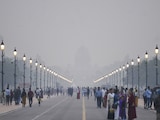- Los Angeles faces unrest following aggressive ICE raids that sparked public outrage.
- Protesters clashed with law enforcement, resulting in violence and the use of tear gas and rubber bullets.
- President Trump deployed 2,000 National Guard troops to LA without California's Governor's consent.
Los Angeles is burning again.
The weekend ICE raids lit the first spark. Armed agents fanned across workplaces, detaining dozens in what activists say were overly aggressive immigration crackdowns. It didn't take long for the anger to spill onto the streets. Protesters hurled rocks, burned vehicles, and faced tear gas and rubber bullets as the city spiralled into chaos.
In a move that reminded many of past strongman politics, President Donald Trump deployed 2,000 National Guard troops, without the California Governor's consent. The streets of LA, already tense with chants and smoke, now stood under federal boots.
This isn't the first time 'La La Land' has been here. Rewind to 1992, the last time Los Angeles truly burned.
When The City Erupted
It was April 29, 1992. Four white Los Angeles Police Department (LAPD) officers had just been found not guilty in the brutal beating of Rodney King, an unarmed Black motorist. The attack was captured on video. It showed Mr King on the ground, arms flailing, as batons crashed down over and over. The footage aired across the world.
Yet, when the not guilty verdict came, the rage exploded.
Six straight days of fire, looting, and violence engulfed Los Angeles. Entire neighbourhoods were torched. Stores burned. Helicopters circled above a city at war with itself. More than 60 people were killed, over 2,000 injured, and around 12,000 arrested. The damage was Over $1 billion, and 1,100 buildings destroyed. President George W Bush deployed thousands of federal troops to restore order.
At the time, the fire department was fighting flames and dodging bullets along with it.
The Aftermath
The Rodney King riots didn't emerge out of nowhere. For decades, communities of colour in LA lived under a system they believed brutalised them with impunity. Mr King's situation only confirmed what many already suspected. As the 1992 jury read its verdict, people began chanting: "No justice, no peace."
On that very day, a truck driver was pulled from his vehicle and beaten on live television. Police retreated. Fire spread. The mayor declared a state of emergency. President George Bush sent in troops. And Rodney King's famous televised plea, "Can we get along?" echoed across a broken city.
The aftermath was seismic. LA Police Chief Daryl Gates resigned. Mayor Tom Bradley chose not to run again. The city settled with Mr King for $3.8 million.
Fast forward to 2025. The players have changed. ICE raids instead of police brutality, immigration raids instead of beatings. But the flames are familiar.















